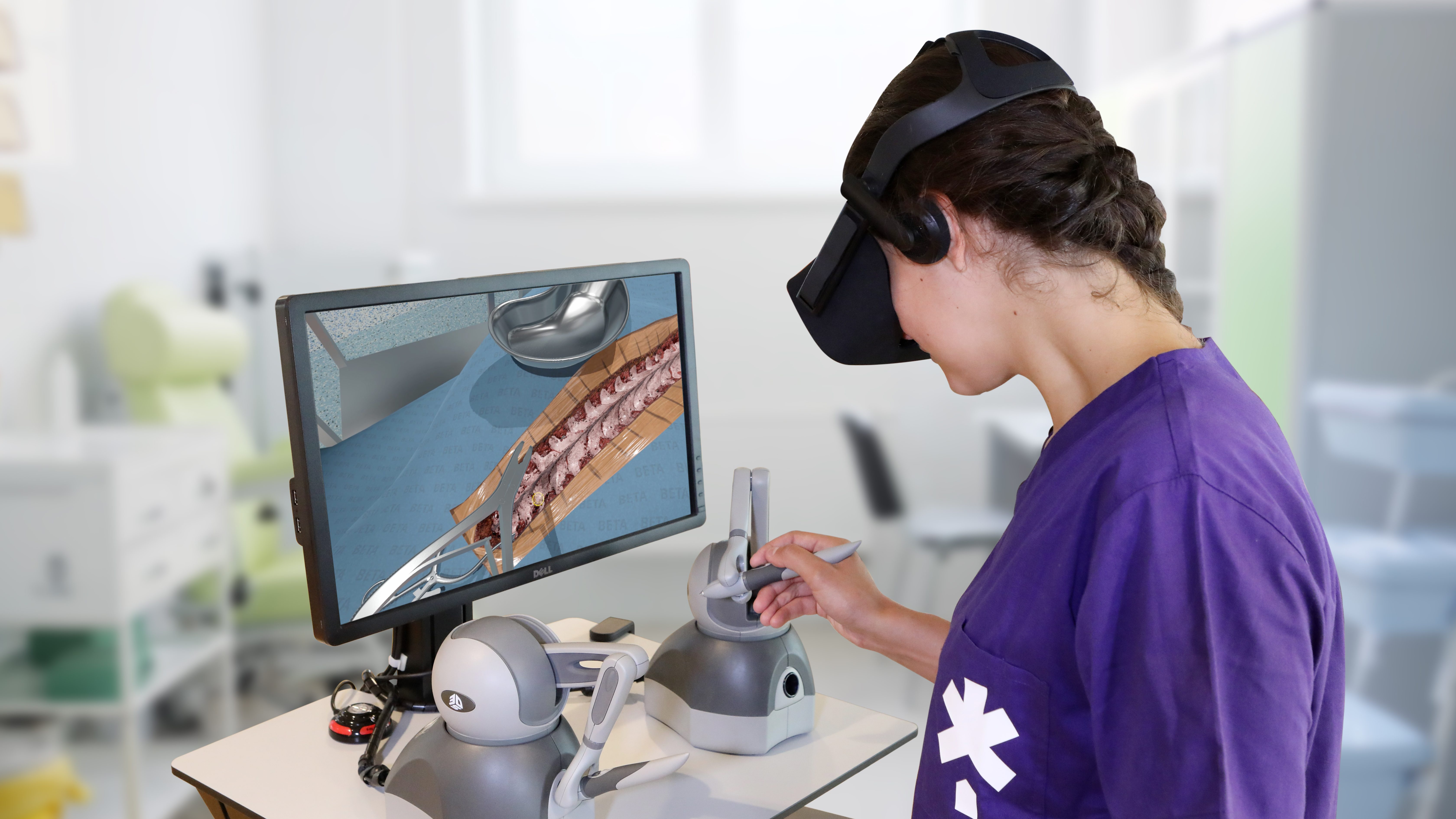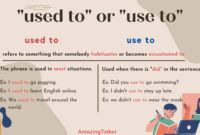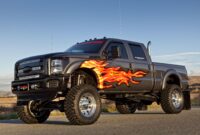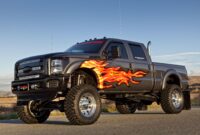Virtual Truck Customization: Crafting Your Dream Rig in the Digital World sale.truckstrend.com
In the vast, open roads of virtual trucking simulators like American Truck Simulator (ATS) and Euro Truck Simulator 2 (ETS2), the rumble of a powerful engine and the endless miles are only part of the experience. Beyond the core gameplay of hauling cargo, a profound and deeply satisfying element beckons players: Virtual Truck Customization. It’s the art and science of transforming a generic digital rig into a personalized masterpiece, a true extension of the player’s identity on the asphalt.
Virtual truck customization goes far beyond merely changing a paint color; it encompasses an intricate ecosystem of cosmetic enhancements, performance tweaks, and interior refinements that allow players to imbue their virtual vehicles with unique character. This isn’t just about aesthetics; it’s about immersion, self-expression, and a deeper connection to the digital world. For many, the garage is as important as the highway, offering a creative outlet and a sense of ownership over their hard-earned, digital assets. In a world where every truck often starts identical, customization is the key to standing out, reflecting personal style, and enhancing the overall enjoyment of the virtual trucking journey.
Virtual Truck Customization: Crafting Your Dream Rig in the Digital World
The Allure of Personalization: Why Customize Your Virtual Rig?
The drive to personalize is deeply human, and it translates seamlessly into the virtual realm. For virtual truckers, customization offers a multitude of compelling benefits:
- Immersion and Realism: A customized truck feels more "real" and personal. When you’ve meticulously chosen every detail, from the exhaust stacks to the dashboard bobblehead, the distinction between driving a virtual vehicle and your virtual vehicle blurs, significantly enhancing the sense of presence and immersion.
- Personal Expression and Identity: Your truck becomes a canvas for your creativity. Whether you prefer a sleek, modern look, a rugged, classic vibe, or a vibrant, attention-grabbing design, customization allows you to project your personality onto your rig. It’s a digital avatar on wheels.
- Enhanced Gameplay Experience: While primarily cosmetic, some customizations (like better headlights or specific chassis types) can subtly influence gameplay, making night driving safer or allowing for heavier loads. More importantly, the act of customizing itself is a rewarding meta-game, adding another layer of depth to the simulator experience.
- Community Engagement: Sharing your unique truck designs on social media, forums, or in multiplayer convoys fosters a sense of community. Players often inspire each other, exchange tips, and even create custom paint jobs or mods for others. It’s a showcase of skill and creativity within the trucking community.
- Sense of Achievement: Earning the in-game currency or completing achievements to unlock new customization options provides tangible goals and a feeling of accomplishment. Building your dream truck piece by piece is a satisfying progression.

Types of Virtual Truck Customization
The world of virtual truck customization is expansive, offering various avenues for personalization. These can broadly be categorized as follows:

External Aesthetics: This is often the first stop for any aspiring truck designer.
- Paint Jobs & Decals: From simple solid colors to intricate metallic finishes, custom liveries, company logos, and thematic designs. Many games offer a robust paint shop, and the modding community provides endless templates.
- Chrome & Accessories: Polished chrome grilles, bumpers, fuel tanks, and side mirrors add a classic, gleaming look. Light bars, additional headlights, air horns, and oversized exhaust stacks further enhance the truck’s silhouette and presence.
- Wheels & Tires: A vast selection of rim designs, tire types (low profile, aggressive treads), and hub covers can dramatically alter a truck’s stance and visual weight.
- Chassis & Cab Configuration: While often impacting performance, selecting different chassis lengths (e.g., 4×2, 6×4, 8×4) or cab sizes (day cab, sleeper cab) fundamentally changes the truck’s appearance and utility.
- Mudflaps, Fenders & Spoilers: These smaller details contribute significantly to the overall look, allowing for personalized branding or a more aerodynamic profile.

-
Internal Comfort & Functionality: The driver’s cockpit is their sanctuary, and personalization extends within.
- Dashboard Accessories: Bobbleheads, coffee cups, mobile phones, GPS units, and even air fresheners add a touch of realism and personal flair to the dashboard.
- Steering Wheels & Seats: Custom steering wheel designs, luxurious leather seats, or specialized racing seats enhance comfort and style.
- Curtains & Interior Lighting: Practical and aesthetic additions like window curtains for privacy during virtual rests and ambient interior lighting kits create a cozy atmosphere.
- Functional Displays: While often standard, some mods allow for custom radio displays or enhanced navigation screens.
-
Performance Upgrades (Virtual): While not purely cosmetic, these impact how the truck drives and often involve visual components.
- Engines: Upgrading to a more powerful engine not only changes the horsepower and torque but can sometimes be reflected visually by larger engine blocks or specific badging.
- Transmissions: Different gearboxes (e.g., 12-speed, 18-speed) affect driving feel and fuel efficiency.
- Brakes & Suspension: While less visually apparent, these upgrades contribute to handling and safety. Some suspension mods can alter ride height.
-
Modding Community & Tools: This is where customization truly explodes beyond official offerings.
- Official DLCs: Game developers often release official downloadable content (DLCs) with new trucks, themed paint packs (e.g., "Mighty Griffin Tuning Pack" for Scania, "Feldbinder Trailer Pack"), and accessory kits. These are generally high-quality and fully integrated.
- Workshop Mods (Steam Workshop): For games like ATS and ETS2, the Steam Workshop is a treasure trove of user-created content. Players can easily subscribe to mods for new trucks, custom parts, paint jobs, sound packs, and even environmental enhancements.
- Third-Party Mod Sites: Websites like SCSMods.com, Modland.net, and others host an even wider variety of mods, often requiring manual installation.
- Texture Editors & Modding Tools: Advanced users can create their own paint jobs using image editing software (like Photoshop or GIMP) and dedicated modding tools provided by the community.
Getting Started: A Step-by-Step Guide to Customizing Your Truck
Ready to make your mark on the virtual highways? Here’s how to begin your customization journey:
- Identify Your Game: Ensure you know which truck simulator you’re playing (e.g., American Truck Simulator, Euro Truck Simulator 2, SnowRunner). Customization options and modding communities vary between games.
- Understand In-Game Customization: Start with what the base game offers. Visit the truck dealer or service garage. Most games have a dedicated "upgrade" or "customize" menu where you can change paint, add basic accessories, and select different chassis/engine options using in-game currency.
- Explore Official DLCs: Check your game’s store page (e.g., Steam Store). Official tuning packs, paint jobs, and truck brand DLCs offer high-quality, developer-supported content that seamlessly integrates into the game.
- Dive into the Modding Scene (Steam Workshop First):
- For ATS/ETS2: Open the game in Steam, go to the "Workshop" tab. Browse by category (e.g., "Trucks," "Skins," "Parts"). When you find a mod you like, click "Subscribe." Steam will automatically download and update it.
- Enable Mods In-Game: After subscribing, launch your game. Go to the "Mod Manager" (usually accessible from the main menu profile selection screen). Find the subscribed mods and activate them. Ensure they are in the correct load order if specified by the mod creator.
- Explore Third-Party Mod Sites (With Caution): If the Workshop doesn’t satisfy, reputable third-party mod sites offer more niche content.
- Download: Download the mod file (usually a .scs file).
- Install: Place the .scs file into your game’s "mod" folder (e.g.,
DocumentsAmerican Truck SimulatormodorDocumentsEuro Truck Simulator 2mod). - Activate: Enable the mod in the in-game Mod Manager, just like Workshop mods.
- Test and Troubleshoot: After adding new customizations or mods, always test them in-game. Drive your truck, check for visual glitches, crashes, or performance drops. If issues arise, disable recently added mods one by one to identify the culprit.
Important Considerations for Virtual Customization
While incredibly rewarding, virtual customization isn’t without its nuances:
- Compatibility is Key: Mods are often built for specific game versions. An outdated mod might cause crashes or graphical errors. Always check the mod’s description for compatibility information. Running too many conflicting mods can also lead to issues.
- Performance Impact: High-resolution texture packs, detailed truck models, or mods that add many new objects can significantly impact game performance, especially on older hardware. Monitor your frame rates.
- Source Reliability: When downloading from third-party sites, always use reputable sources to avoid malicious files or low-quality, buggy mods. Read comments and reviews.
- Game Updates: Major game updates can often "break" mods, requiring mod creators to update them. Be patient and check mod pages for updates after a game patch.
- Ethical Modding: Respect mod creators’ work. Avoid pirated content or re-uploading mods without permission. Many modders create content purely out of passion.
- Balance and Over-Customization: While exciting, too many lights, excessive chrome, or a chaotic paint job can sometimes detract from the realism or even make your truck look garish. Find a balance that suits your style.
Advanced Customization Tips & Tricks
- Layering Mods: Combine smaller, specific mods (e.g., a custom sound pack with a specific engine mod) to create a truly unique experience.
- Thematic Builds: Instead of random additions, plan a theme for your truck (e.g., "classic American muscle," "European luxury hauler," "downtrodden workhorse"). This helps in making cohesive customization choices.
- Interior Detailing: Don’t neglect the inside! Small touches like a custom steering wheel, dashboard accessories, or even a different seat color can make a huge difference to your driving comfort.
- Custom Skins: If you’re artistically inclined, learn how to create your own truck skins using image editing software and the game’s template files. This offers ultimate control over your truck’s appearance.
- Sharing Your Creations: Take screenshots or videos of your customized rigs and share them with the community. It’s a great way to get feedback and inspire others.
Cost Considerations for Virtual Truck Customization
While the core game provides a baseline for customization, the depth of options often comes with varying cost implications. It’s important to understand where your money (or in-game effort) goes.
| Customization Type | Typical Cost Model | Description |
|---|---|---|
| Basic In-Game Customization | In-Game Currency (Earned) | Standard paint jobs, basic accessories, engine/transmission upgrades available through gameplay progression. Requires no real money. |
| Official DLC Packs | One-time Purchase (Real Money) | Expansions like truck tuning packs (e.g., Scania Mighty Griffin, DAF XF Tuning), themed paint jobs, or specialized accessory packs. |
| Community Mods (Free) | Free Download (Donations Optional) | Vast collection of user-created content (trucks, parts, skins, sounds, maps) from Steam Workshop or reputable modding websites. |
| Community Mods (Premium/Paid) | Direct Purchase / Subscription (Rare) | Some high-quality modders offer exclusive content via Patreon subscriptions or direct sales for highly detailed, unique models/skins. |
| Game Purchase | One-time Purchase (Real Money) | The fundamental cost of acquiring the base game (e.g., American Truck Simulator, Euro Truck Simulator 2). A prerequisite for all customization. |
| Software/Tools | Free to Paid | Graphics editing software (GIMP: Free; Adobe Photoshop: Paid subscription) for creating custom skins. Mod managers are often free. |
Frequently Asked Questions (FAQ)
Q1: Will customizing my truck affect its performance in the game?
A1: Mostly no, for cosmetic items. Performance upgrades like engines and transmissions will affect gameplay. However, very high-resolution texture mods or complex 3D models can sometimes impact your game’s frame rate, especially on lower-end PCs.
Q2: Are mods safe to download?
A2: If you stick to the Steam Workshop for ATS/ETS2, mods are generally safe. For third-party sites, use reputable sources and check comments/reviews. Avoid downloading from suspicious or unknown websites to prevent malware.
Q3: My game crashed after installing a mod. What should I do?
A3: First, disable the most recently installed mod in the Mod Manager. If that doesn’t work, disable mods one by one until the game runs smoothly. The issue is likely a mod conflict or an outdated/corrupted mod.
Q4: Can I use mods in multiplayer (Convoy mode)?
A4: Yes, in games like ATS/ETS2, you can use cosmetic mods (like custom truck parts or paint jobs) in Convoy mode as long as other players in your session also have those mods enabled. If they don’t, your truck might appear as a default version to them, or the modded parts might be missing.
Q5: How do I make my own custom paint job?
A5: You’ll need an image editing program (like GIMP or Photoshop) and the game’s official truck skin templates (often found in the game’s modding wiki or community forums). It involves painting on a flat template that wraps around the 3D model, then saving it as a .scs file for the game to read.
Conclusion
Virtual truck customization is more than just a feature; it’s a vibrant subculture within the trucking simulator community. It offers an unparalleled avenue for personal expression, creativity, and a deeper connection to the digital world. From meticulously chosen external accessories to cozy interior details and performance-enhancing upgrades, every choice contributes to crafting a unique digital identity on the road. Whether you’re a casual player looking to add a splash of color or a dedicated enthusiast aiming for a hyper-realistic custom build, the tools and communities are there to support your vision. So, fire up your game, visit the garage, and unleash your inner designer – the open road awaits your personalized masterpiece.




